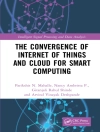This book focuses on near-zero energy buildings (NZEBs), smart communities and microgrids. In this context, demand response (DR) is associated with significant environmental and economic benefits when looking at how electricity grids, communities and buildings can operate optimally. In DR, the consumer becomes a prosumer with an important active role in the exchange of energy on an hourly basis. DR is gradually gaining ground with respect to the reduction of peak loads, grid balancing and dealing with the volatility of renewable energy sources (RES). This transition calls for high environmental awareness and new tools or services that will improve the dynamic as well as secure multidirectional exchange of energy and data. Overall, DR is identified as an important field for technological and market innovations aligned with climate change mitigation policies and the transition to sustainable smart grids in the foreseeable future. Smart Buildings, Smart Communities and Demand Response provides an insight into various intrinsic aspects of DR potential, at the building and the community level.
Spis treści
Preface ix
Nikos KAMPELIS
Nomenclature xv
Nikos KAMPELIS
Chapter 1. Demand Response in Smart Zero Energy Buildings and Grids 1
Nikos KAMPELIS
1.1. Introduction 1
1.2. Smart and zero energy buildings 2
1.3. DR and smart grids 9
1.3.1. DR and congestion management 18
1.3.2. DR and AS 19
1.3.3. DR programs 21
1.3.4. Building level DR 22
1.3.5. District level DR and microgrids 26
1.3.6. ANN-based short-term power forecasting 31
1.4. Scientific focus of the book 32
1.5. Book outline and objectives 34
Chapter 2. DR in Smart and Near-zero Energy Buildings: The Leaf Community 37
Nikos KAMPELIS, Konstantinos GOBAKIS, Vagias VAGIAS, Denia KOLOKOTSA, Laura STANDARDI, Daniela ISIDORI, Cristina CRISTALLI, Fabio Maria MONTAGNINO, Filippo PAREDES, Pietro MURATORE, Luca VENEZIA, Marina Kyprianou DRACOU, Alaric MONTENON, Andri PYRGOU, Theoni KARLESSI, Mattheos SANTAMOURIS
2.1. The Leaf Lab industrial building, AEA Italy 39
2.2. The Leaf House residential building, AEA Italy 41
Chapter 3. Performance of Industrial and Residential Near-zero Energy Buildings 43
Nikos KAMPELIS, Konstantinos GOBAKIS, Vagias VAGIAS, Denia KOLOKOTSA, Laura STANDARDI, Daniela ISIDORI, Cristina CRISTALLI, Fabio Maria MONTAGNINO, Filippo PAREDES, Pietro MURATORE, Luca VENEZIA, Marina Kyprianou DRACOU, Alaric MONTENON, Andri PYRGOU, Theoni KARLESSI, Mattheos SANTAMOURIS
3.1. Materials and methods 44
3.1.1. Energy simulation model 45
3.2. Energy performance analysis 51
3.2.1. The Leaf Lab 51
3.2.2. The Leaf House 57
3.3. Discussion 61
3.4. Conclusion 63
Chapter 4. HVAC Optimization Genetic Algorithm for Industrial Near-Zero Energy Building Demand Response 65
Nikos KAMPELIS, Nikolaos SIFAKIS, Denia KOLOKOTSA, Konstantinos GOBAKIS, Konstantinos KALAITZAKIS, Daniela ISIDORI, Cristina CRISTALLI
4.1. Methodology 66
4.2. GA optimization model 70
4.3. Model of energy cost 72
4.4. Results and discussion 73
4.4.1. Scenario 1: January 25, 2018 (winter) 74
4.4.2. Scenario 2: March 27, 2018 (spring) 76
4.4.3. Scenario 3: August 15, 2018 (summer) 77
4.4.4. Scenario 4: September 10, 2018 (autumn) 81
4.4.5. Scenario 5: September 21, 2018 (autumn) 84
4.4.6. Scenario 6: November 20, 2018 (winter) 84
4.4.7. Scenario 7: November 22, 2018 (winter) 88
4.4.8. Scenario 8: November 25, 2018 (winter) 88
4.5. Conclusion and future steps 92
Chapter 5. Smart Grid/Community Load Shifting GA Optimization Based on Day-ahead ANN Power Predictions 95
Nikos KAMPELIS, Elisavet TSEKERI, Denia KOLOKOTSA, Konstantinos KALAITZAKIS, Daniela ISIDORI, Cristina CRISTALLI
5.1. Infrastructure and methods 100
5.2. Day-ahead GA cost of energy/load shifting optimization based on ANN hourly power predictions 104
5.3. To U case study 106
5.3.1. ANN-based predictions 106
5.3.2. GA optimization results 112
5.4. DA real-time case study 121
5.4.1. ANN-based predictions 121
5.4.2. Combined ANN prediction/GA optimization results 126
5.5. Limitations of the proposed approach 139
5.6. Conclusion 139
Conclusions and Recommendations 143
Nikos KAMPELIS
References 147
List of Authors 163
Index 167
O autorze
Denia Kolokotsa is Associate Professor at the School of Environmental Engineering of the Technical University of Crete in Greece, President of the European Cool Roofs Council, Editor of the Elsevier Energy and Buildings Journal and former Editor-in-Chief of the Advances in Building Energy Research Journal.
Nikos Kampelis works as a Research Associate at the Energy Management in the Built Environment Research (EMBER) laboratory of the Technical University of Crete. He completed his Ph D on demand response for the optimal integration of loads and renewable energy in microgrids.












